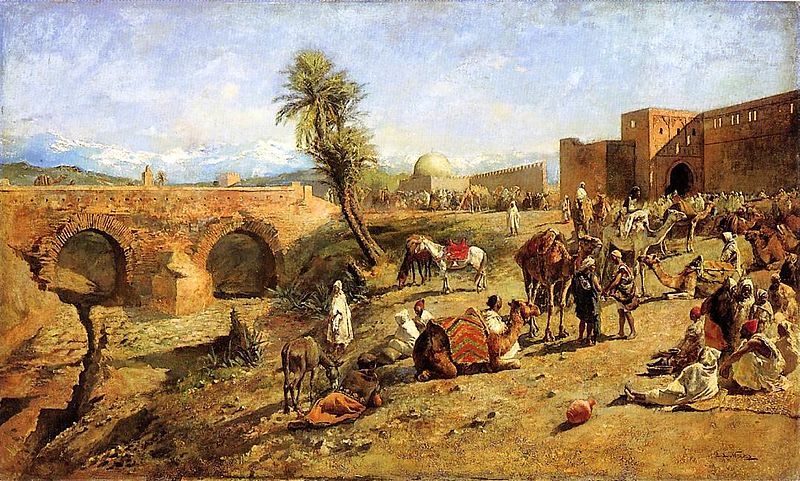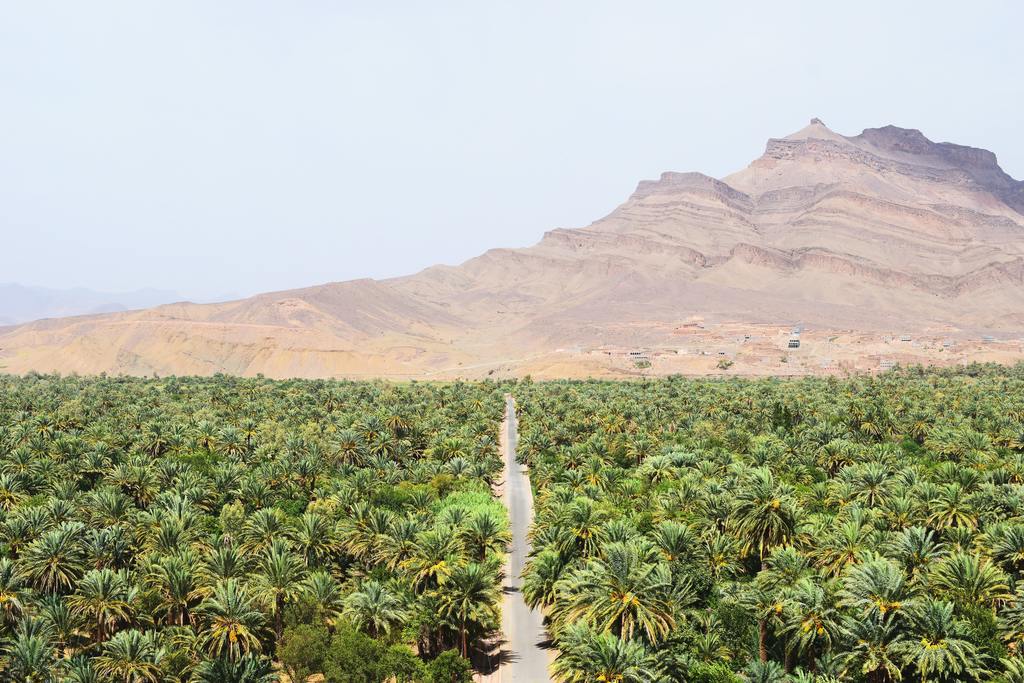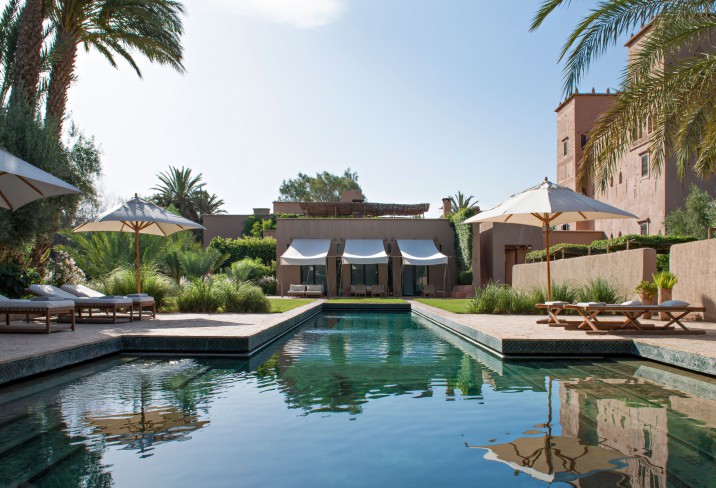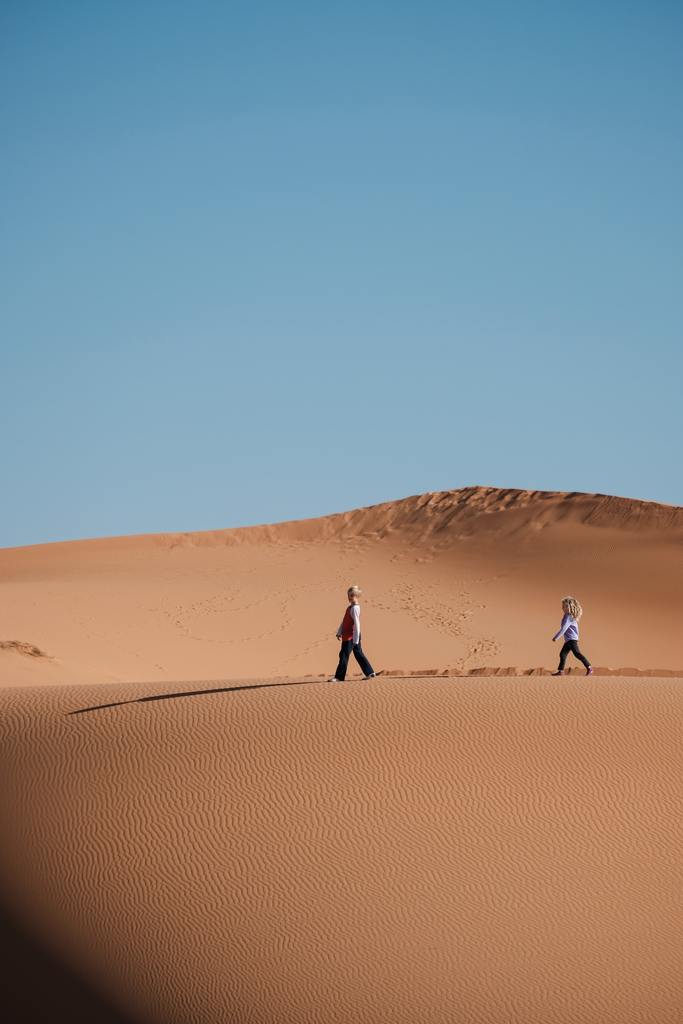Into the Big Sahara

There is something about a desert that is truly captivating for people, not just the Moroccan desert actually, but deserts all over the world; Arizona, Utah, Gobi, Namibia – maybe it’s something about the distance from everything, and the wide-open skies – a vast space where there seem to be no visible boundaries. Or is it because they take us back to a time when there was little or no built environment, leaving us with a kind of primeval feeling?
The thing about the Moroccan desert that makes it so inspiring in addition to all of that is the exotic cultural associations of the Saharwi and Berber tribes, and links to a nomadic life fast disappearing; there is also the promise of lost cities and dinosaur footprints as our friend and adventurer Alice Hunter Morrison has recently discovered. Somewhere in our unconscious is also the filmic history of the past, the Moroccan desert definitely has the cool factor to become popular for its inherent Instagram appeal.
An epic desert experience takes you on a guided adventure to some of the more remote areas of the Moroccan Sahara, and the impressive rolling dunes of Erg Chegaga. The journey is a big part of the adventure, with opportunities to explore ancient kasbahs, hike through wild date palm groves, swim in ancient river valleys, meet nomadic people, and discover a lot about local culture and Moroccan history on the way.

Driving through the High Atlas Mountains from Marrakech through little Berber Villages, you can drop in to visit the faded grandeur of a 19th Century Kasbah in Telhouet once the home of Glaoui the former Pascha during French rule. Then following the Ounila valley by way of some of the trans-Saharan caravan routes takes you through magnificent pink rock formations – to land at the 11th Century Ksour of Ait Ben Haddou, which sits on a vantage point beside the Ounila river.

To get to the Sahara you pass through a vast palm grove, called the Draa valley, home to the longest river in Morocco – along the way there are many old Ksours and Kasbahs to see built in the traditional way from the red earth. If you want to take a night or two in this region there are some wonderful local Berber towns where staying with a local family allows you to experience a ‘slow’ life but one which is rich in locally grown foods, culturally ingrained and warming to the heart. Or, you can stop off in secret low key and luxury Ksours hidden from the roads down old dirt tracks, you will be pleasantly surprised by the level of care, comfort you can enjoy – you can even hire your own private Kasbah if you wish.
The gateway to the desert itself is the desert city of Zagora. You will notice the dress of local people changing women wear tribal shawls or wrap themselves in a single piece of material which swathes them from head to toe, in light fabric to protect them from the sun. From here through M’Hamid you start to enter the great dunes of the Sahara.
The journey across the desert is exhilarating, bumping up and down in a 4 x 4, you pass camels, motorbikes, traditional berber tents until you reach mountains of soft rolling red sand. We can’t stop the desire to hop out and run shoeless up the dunes like carving the first piste of snow on the slopes.

Desert stays in camps adorned with traditional brown Berber tents made from goat’s wool or more upscale luxury canvas tents are a must. While you have an anchor in a camp you can take a ride by camel or 4 x 4 to indulge in local delicacies at pop up picnic spots, you can meet local nomads who still have a desert life, bake bread in the sand in the traditional nomadic way; search for fossils and explore vast dry salt flats.
For the more adventurous you can try your hand at sandboarding; or simply enjoy your desert surroundings with sunset drinks on the top of the dunes followed by an evening of music around the campfire.

If you fancy a spot of reading after taking in the stars and the campfire music, you could try the classic; ‘A Sheltering Sky’ from famous American Marocophile, Paul Bowles – a tense drama that is set for some part in the desert.
From Erg Chigaga you can continue off-road over the dried salt pans of Lake Iriki to reach the small desert town of Foum Zguid. From here you can journey into the Anti Atlas Mountains through famous traditional rug-making regions such as Tazenakht, or make a detour to Tissint, which famously witnessed a Martian Meteorite in 2011 (one of only 5 to have hit the earth and the only to leave a residue of red Martian soil) and then on to the walled city of Taroudant through mountain passes and back up for the last night in Marrakech.
A desert tour to the wilder desert taking in some of the local history and culture and interesting sites on the way takes a minimum of 7 – 10 days to fully immerse, for a longer and more off-road experience allow 2 weeks.
If you would like to find out more about how you can incorporate a desert tour into your Morocco travel itinerary. Get in touch with one of our travel experts through info@epic.travel or by filling out our contact form.



